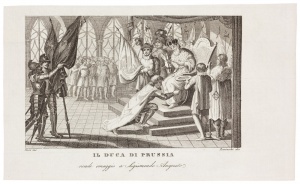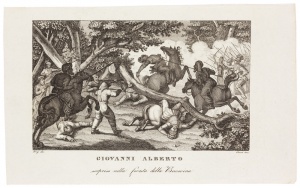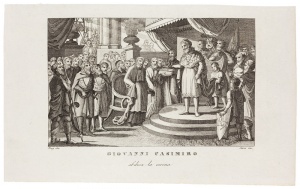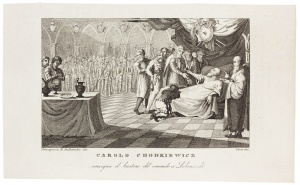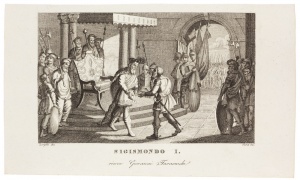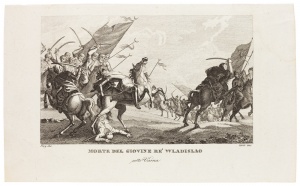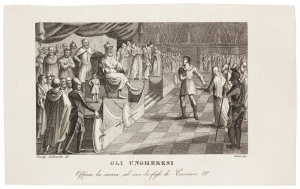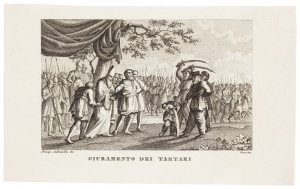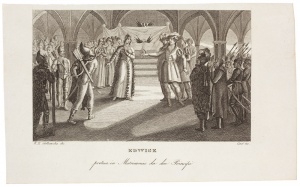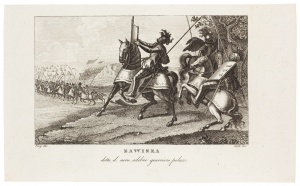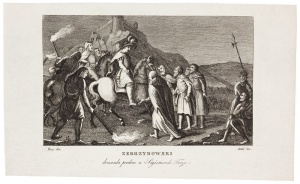
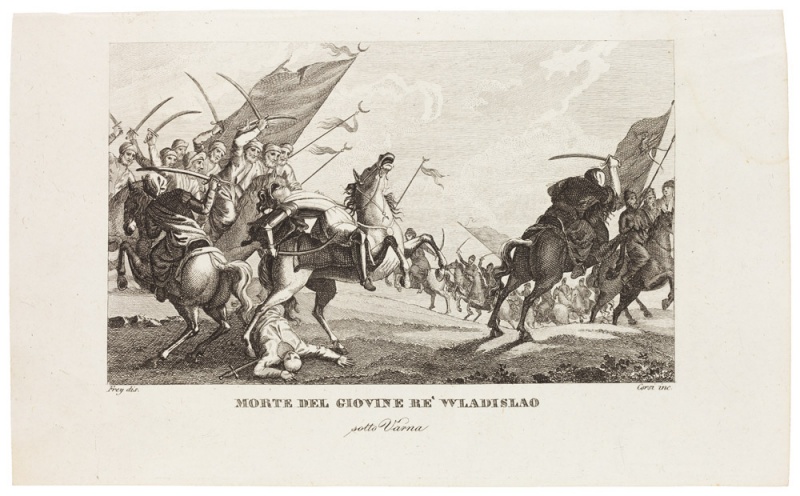

The death of the young King Vladislaus near Varna
| Author: |
Francesco Corsi (1801–1850) |
| Created: | 1831 |
| Material: | paper |
| Technique: | copper engraving |
| Dimensions: | 13.80 × 22.30 cm |
| Signature: | bottom left: Frey dis bottom right: Corsi inc |
ZAYDLER BERNARD, STORIA DELLA POLONIA, FIRENZE, 1831.
Copper engraving after Jan Zachariasz Frey.
One of the illustrations to Storia della Polonia (The History of Poland) by Bernard Zeidler, published in Florence in 1831, shows the tragic death of Vladislaus Jagiellon (1424–1444) in a battle against the Turks near Varna (now in Bulgaria). Vladislaus Jagiellon, who is also called Vladislaus of Varna, is an exceptional historical figure who became a legend soon after he died. The eldest son of Jogaila and Sofija Alšėniškė (Zofia Holszańska), he became King of Poland after his father’s death, and in 1440 he was crowned King of Hungary. In 1444, the young monarch commanded the joint army of Poland and Hungary in the defence of the Balkans against troops led by the Turkish Sultan Murad II. Unfortunately, the Ottoman forces won, and Vladislaus Jagiellon died a heroic death. His body could not be found after the battle, giving rise to rumours that he was rescued. Vladislaus Jagiellon was considered a martyr, an example of a courageous Christian king, as early as the 15th century, and in Europe poems were composed about him.
The drawing for the illustration in Zeidler’s book, which was engraved in Tuscany by Francesco Corsi (mentioned between 1801 and 1850), was by the artist Jan Zachariasz Frey (1769–1829), who worked in Warsaw, mostly for the Czartoryski family. The first print based on the drawing was by the Dresden-based engraver Johann Frenzel (1782–1855), included in the first edition of ‘Historical Songs’ by Julian Ursyn Niemcewicz (Warsaw, 1816).
Text author Rūta Janonienė
Source: Law firm Valiunas Ellex art album RES PUBLICA (2018). Compiler and author Rūta Janonienė






